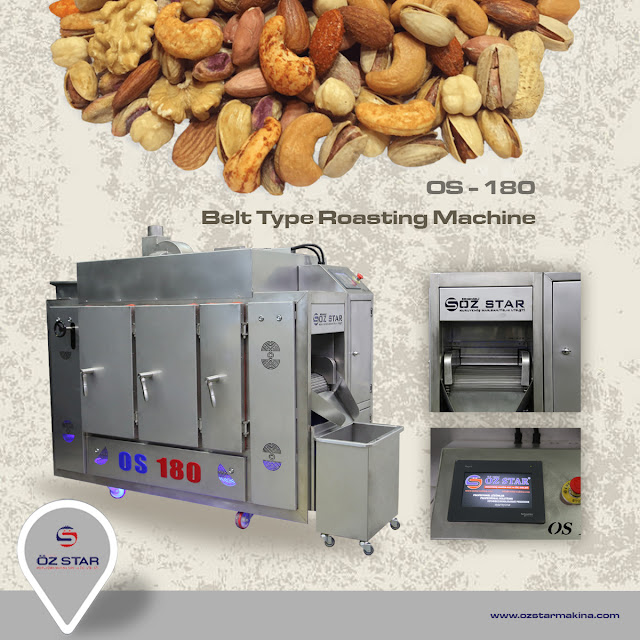OZSTAR has the best roasters of various capacities to give you the perfectly roasted peanuts! We also provide additional equipment for flavouring and seasoning the nuts. OZSTAR also provides additional flavoring and seasoning equipment for nuts We manufacture different capacity to suit demand.
This stainless steel is of high quality and can be controlled from the touch screen control panel. The mean monthly temperature patterns at both Myrtleford and Orange are similar to the four overseas locations, suggesting that these Australian localities would have suitable climates for hazelnut production. http://nutsroasters.com/
Mean annual rainfall varies from a low of 518 mm in Reus, where hazelnut orchards are irrigated, to over 1000 mm in Giresun and Corvallis, where hazelnuts are grown without irrigation. Although mean monthly temperature patterns are similar across all these centres, the pattern of rainfall distribution varies between them. http://nutsroasters.com/
The
rainfall at Giresun is fairly evenly distributed, with no month receiving less
than 50 mm. In contrast, Corvallis and Viterbo receive the majority of their
rainfall in the autumn and winter months with little rainfall in the summer
months of June, July and August. The implications of low rainfall in June and
July, when nuts and kernels are developing, are discussed later in this thesis.
http://www.twinoroasters.com/
All the northern hemisphere centres have more than 50 mm of rainfall in May, when trees would be making active leaf and shoot growth. It is recognised that data is required on evaporation rates and soil water-holding capacity to estimate soil moisture availability in the growing season; this is discussed further in the next section, 2.1.2, Soils.
Studies on the effects of climate on hazelnut production indicate that although the European hazelnut is a deciduous woody plant, it can be damaged by extremes of cold in winter. In winter, dormant hazelnuts can tolerate temperatures down to -23°C (Thompson, 1981), although Schuster (1944) reported temperatures of -15°C to be damaging to dormant catkins.
Extended catkins are less cold tolerant, but can tolerate temperatures down to -8°C (Germain, 1986) with female inflorescences tolerating temperatures down to -10°C (Tous, 2001).
However, Thompson (1981) reported that female stigmas that were frozen at temperatures of -12°C to -15°C proceeded normally as temperatures rose. In Romania, Botu and Turcu (2001) reported the catkins, female flowers and one year-old shoots were damaged during winter when temperatures fell below -27°C.
Duke (1989) suggested that, in order to minimise the risks of damage from low temperatures, sites in which winter temperatures did not fall below -5°C should be selected Chilling temperatures in the range 0-7°C are required to break the dormancy of catkins, female inflorescences and vegetative buds (Mehlenbacher, 1991).
The chill requirements vary with
cultivars. Vegetative buds have the highest requirement; up to 1550 hours for
the cultivar ‘Casina’ (ibid, 1991). http://www.twinoroasters.com/










Hiç yorum yok:
Yorum Gönder